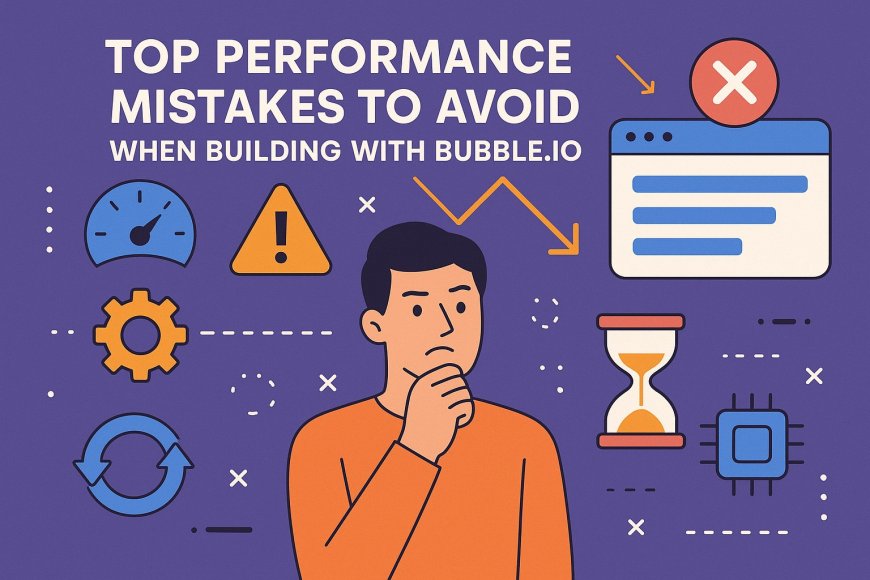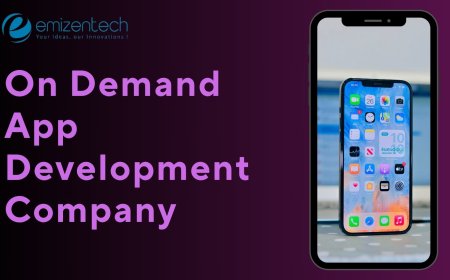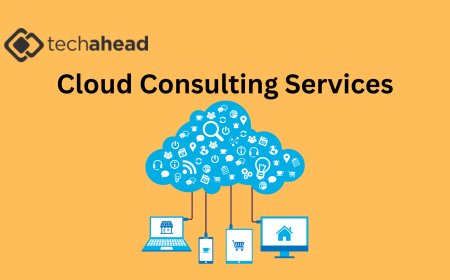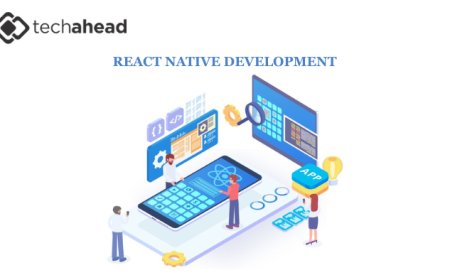Top Performance Mistakes to Avoid in Bubble.io (And Why You Should Hire Expert Bubble.io Developers)

Bubble.io is one of the most powerful no-code platforms for building full-stack web applications. Its revolutionized how startups, solopreneurs, and even enterprises build and scale software. However, with great flexibility comes potential performance pitfalls. If you're not careful, your Bubble app can quickly become slow, inefficient, and hard to scale.
In this article, well uncover the most common performance mistakes developers make in Bubble.ioand why it might be a smart move to hire expert Bubble.io developers to sidestep these costly missteps.
Why Performance Optimization Matters in Bubble.io
Performance isn't just a nice-to-have feature. In Bubble, a sluggish app can mean:
-
Increased bounce rates
-
Poor user experience
-
High server workload
-
Frustrated customers
-
Delayed feature rollouts
Bubble gives developers significant freedombut if you dont understand how Bubble structures workflows, loads data, or handles database operations, you can unintentionally build a slow and unscalable product.
1. Overloading Pages with Too Many Elements
The Mistake:
New developers often cram too many visual elements into a single Bubble pageespecially reusable groups, popups, and hidden workflows.
Why It Hurts:
Each element must load on page load, even if its hidden. This causes bloated pages that slow down initial load times.
Pro Tip:
Use single-purpose pages and load elements conditionally when needed. Better yet, reuse modular components to keep things lean.
2. Not Using Do a Search For Efficiently
The Mistake:
Many users overuse the Do a Search For function without filters, constraints, or proper indexing.
Why It Hurts:
Unfiltered searches force Bubble to scan your entire database every time, increasing load times exponentially as your data grows.
Pro Tip:
Use constraints and data privacy rules effectively. Also, consider setting up custom states to store temporary data instead of running a search every time.
3. Ignoring Backend Workflows
The Mistake:
Trying to do everything on the front end: from calculations to database updates.
Why It Hurts:
This not only slows down your UI but also risks client-side errors.
Pro Tip:
Move heavy or repetitive logic to backend workflows. Backend workflows run on Bubbles server and dont impact the users browser speed.
4. Using Repeating Groups Without Pagination
The Mistake:
Displaying hundreds or thousands of items in a single repeating group without enabling pagination or lazy loading.
Why It Hurts:
Repeating groups with large datasets load extremely slowly and affect user interactivity.
Pro Tip:
Paginate your repeating groups. Load 1020 items at a time and use custom states or scrolling mechanisms to improve performance.
5. Not Leveraging Option Sets
The Mistake:
Storing small static data (e.g., categories, roles, tags) in the database instead of using Option Sets.
Why It Hurts:
Every database call adds latency. Option Sets are faster because theyre loaded with the app and dont require a database search.
Pro Tip:
Use Option Sets for any static data that doesnt change often. It speeds up workflows and improves search performance.
6. Over-Reliance on Custom States for Complex Logic
The Mistake:
Using dozens of custom states to manage multi-step user flows, toggles, filters, and more.
Why It Hurts:
Overuse of custom states can make workflows difficult to debug and cause state clashes, especially when users interact quickly.
Pro Tip:
Use custom states for lightweight UI logic, but move anything complex into reusable workflows or backend actions.
7. Not Setting Up Privacy Rules Properly
The Mistake:
Failing to create precise privacy rules leads to unnecessary exposure of user data or slower queries due to larger datasets being downloaded to the browser.
Why It Hurts:
Improper privacy rules not only affect speed but also pose a serious security risk.
Pro Tip:
Set strict privacy rules on each data type. Limit data access to only whats required per user role.
8. Skipping Image and File Optimization
The Mistake:
Uploading full-size images and media files without compressing them.
Why It Hurts:
Large image files slow down your pages dramatically, especially on mobile networks.
Pro Tip:
Compress images before uploading or use Bubbles built-in image transformations. Store large media files on third-party storage if possible.
9. Poorly Structured Database
The Mistake:
Designing databases like spreadsheetsadding too many fields to one type or creating excessive relational dependencies.
Why It Hurts:
Poor database architecture causes slower queries, bloated storage, and complicated workflows.
Pro Tip:
Normalize your data, avoid circular references, and plan your data structure before you start building.
10. No Performance Testing
The Mistake:
Launching apps without testing how they perform under real-world load.
Why It Hurts:
You might not realize your workflows or data structures are inefficient until its too lateand your users are already frustrated.
Pro Tip:
Use Bubbles built-in performance tools, analyze server logs, and test workflows with dummy data to simulate real user behavior.
When to Hire Expert Bubble.io Developers
Now that you understand the risks of performance mistakes, you might be wondering: should I tackle all this myself?
That depends on your timeline, technical confidence, and budget. But heres why many successful startups hire expert Bubble.io developers:
? They Know Bubble Inside Out
Experienced developers understand how Bubble works under the hood. They avoid costly mistakes from day one.
? Speed Up Development
They know the shortcuts, templates, and performance best practices that shave off weeks of trial and error.
? Scalable Architecture
Expert Bubble developers build with the future in mindmaking your app scalable, secure, and easy to expand.
? Custom Plugin or API Integration
Need a unique function or third-party API? Experts can build custom plugins or set up seamless integrations without slowing your app down.
? Ongoing Maintenance & Upgrades
Hiring professionals means you get long-term supportso your app keeps performing even as you grow.
Final Thoughts
Bubble.io is a game-changerbut only if you build smart from the start. Avoiding performance pitfalls can save you time, money, and unhappy users. And if you want to go beyond the basics and launch a truly professional app, its worth the investment to hire expert Bubble.io developers.
Whether youre building your MVP or scaling a successful product, dont let performance bottlenecks hold you back. Optimize early, test oftenand bring in the pros when it matters most.









































